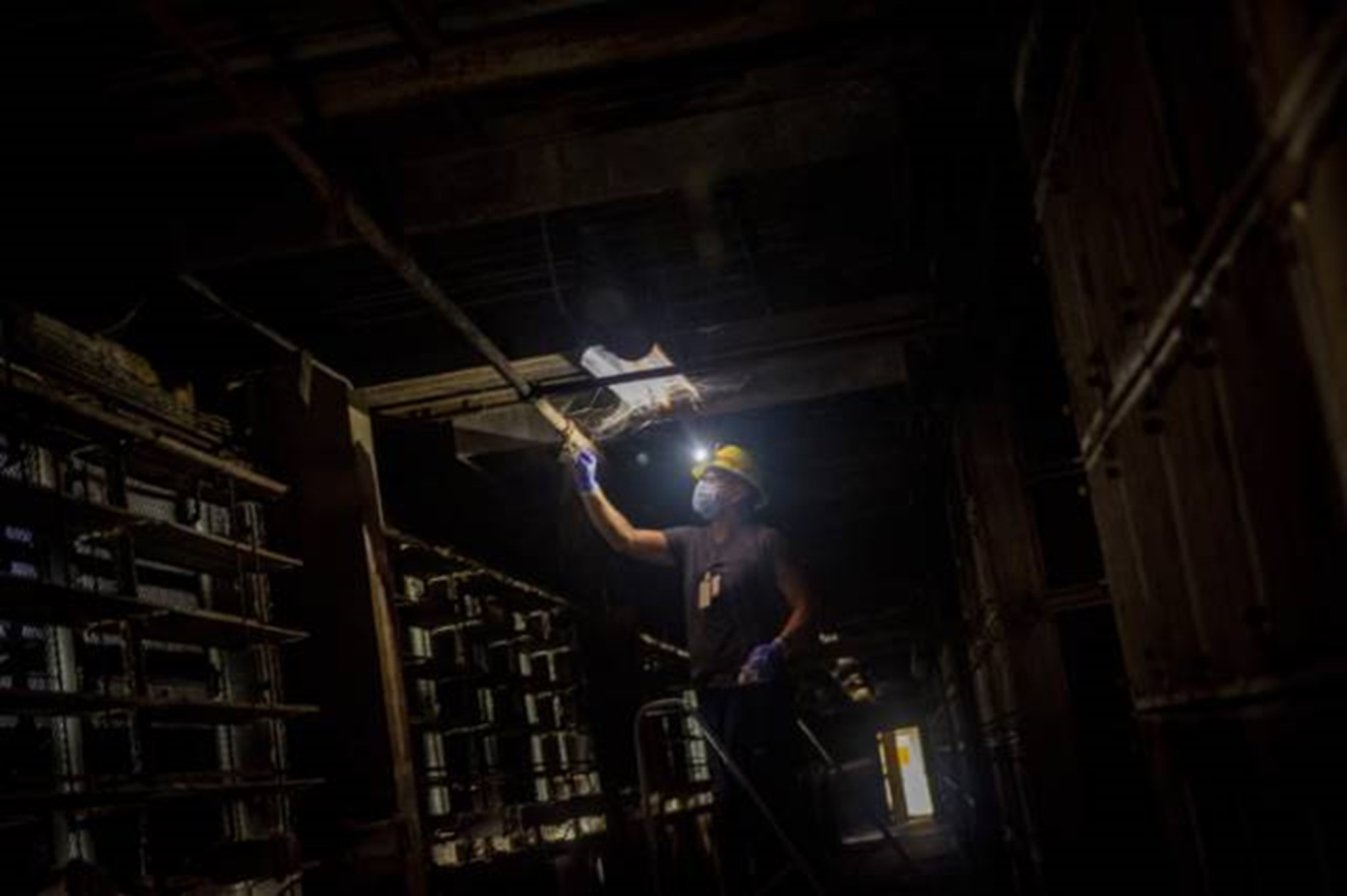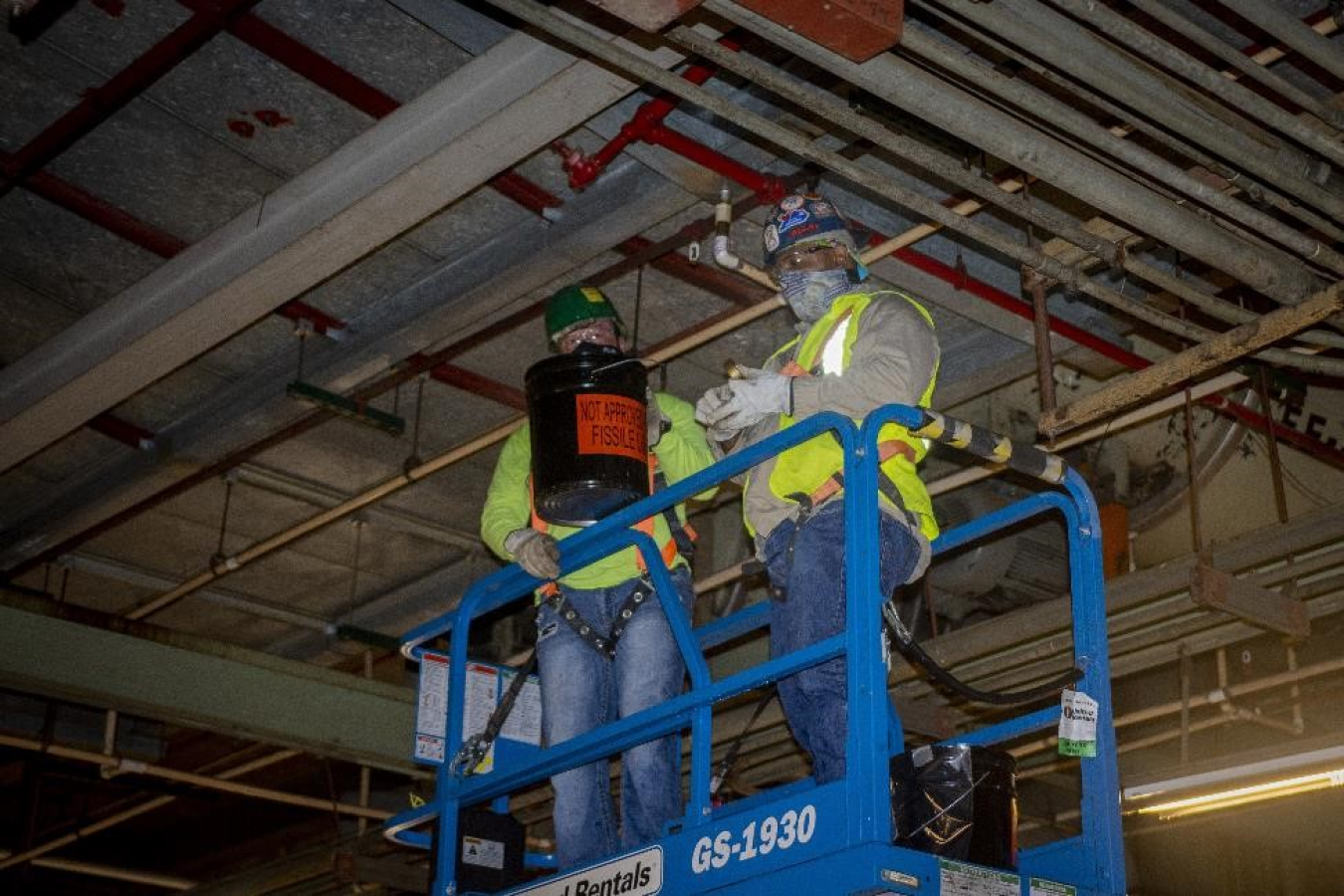
PADUCAH, Ky. – Deactivation workers at EM’s Paducah Site recently completed major modifications to the fire sprinkler system in one of the former gaseous diffusion plant’s four massive uranium-enrichment process buildings.
The purpose of the modifications is to align the building’s fire-suppression requirements from those of a nuclear operation to those appropriate for EM’s current cleanup mission that includes the future demolition of the process buildings.
“These aging systems required a significant amount of maintenance that is no longer going to be necessary,” EM Portsmouth/Paducah Project Office Paducah Site Lead Jennifer Woodard said. “As we reduce the maintenance and power costs, we can invest our time and resources in deactivation projects, which will help us further our cleanup mission.”

EM’s Paducah deactivation and remediation contractor, Four Rivers Nuclear Partnership (FRNP), is also modifying the fire suppression systems in the site’s other large process buildings this year. All four of the buildings will continue to be maintained in a safe condition and prepared for future demolition.
“There are workers on our team who performed maintenance on these systems for many years when the plant was still enriching uranium,” FRNP Program Manager Myrna Redfield said. “Their knowledge was invaluable to our ability to transition the fire suppression system to the dry hybrid system that is utilized in C-333 today.”
To receive the latest news and updates about the Office of Environmental Management, submit your e-mail address.
